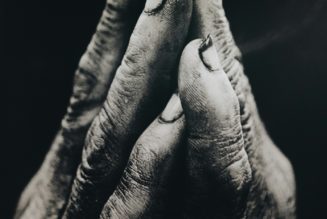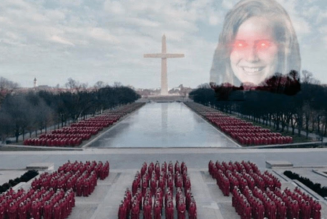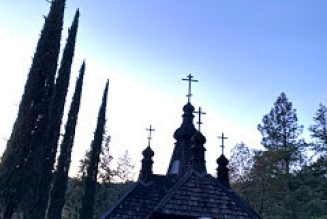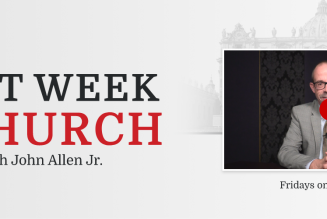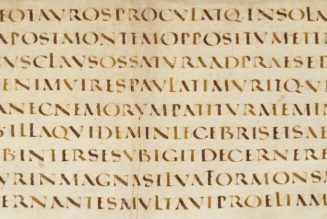ROME – It was an otherwise quiet day on March 15, 2008, when an unemployed 77-year-old Russian man walked uannounced and unaccompanied through the main entrance to the Basilica of St. Francis in the hillside Italian city of Assisi, quietly hoping to mill around and soak in the atmosphere.
Perhaps unfortunately for him, that septuagenarian Russian was quickly recognized as former Soviet Premier Mikhail Gorbachev, and a group of Franciscan friars descended upon him in order to give him a guided tour of what’s known as the Sacro Convento, meaning the Franciscan friary in Assisi, as well as the basilica devoted to the city’s famous saint.
On the back on his experience that day, Gorbachev declared that while he remained an atheist, he had to admit that Soviet Communism had never produced anyone quite like the Poor Man of Assisi and his universal humanistic appeal.
Gorbachev is merely one in a long list of global notables who’ve been drawn to Assisi over the years, from Tariq Aziz, the Foreign Minister of Iraq under Sadaam Hussein and a Chaldean Catholic, to former German Chancellor Angela Merkel and Brazilian President Luiz Inácio Lula da Silva, and even rock stars such as Bruce Springsteen and Patti Smith.
When Italian President Sergio Mattarella needed a platform in 2022 from which to address a nation still emerging from the Covid-19 pandemic, not to mention stunned by the Russian invasion of Ukraine seven months earlier and fearful of the future, he too chose Assisi, which is what Italians always do when they feel a special need for comfort and reassurance.
“We can only exit [from the pandemic] together!” Mattarella said that day. “The difficulties aren’t actually over,” he said, imploring St. Francis to inspire a new commitment to “political love and service to our common home … without which no plan can be realized for tackling such thorny challenges.”
Mattarella’s visit, which was carried live on national television, offered a reminder that over the centuries, the sacro convento in Assisi has been much more than a place where a handful of Franciscans live, just as the basilica is far more than simply a place of worship and a pilgrimage destination.
As an illustration of the dynamism of the place, Gorbachev’s impromptu visit that spring day in 2008 wasn’t an accident. He was in town to receive the Lampada della Pace, or “lamp of peace,” a replica of the lamp that burns continually over the tomb of St. Francis, given in an annual recognition that’s more or less the Catholic Church’s version of the Noble Peace Prize.
That award, and its attendant publicity, demonstrates that the complex in Assisi formed by the friary and the basilica amounts to a vital nerve center for preserving and propagating the spiritual legacy of St. Francis – a unique hybrid blending a shrine, an academic think tank and a K Street lobbying firm.
Put differently, the complex serves as a hub devoted not merely to preserving the memory of St. Francis, but to making it relevant in the here and now.
This coming Feb. 1, for instance, the “Hall of Peace” in the sacro convento will host a symposium on Pope Francis’s eco-encyclical Laudato si’, which took its title from St. Francis’s famed Canticle of the Sun. Among other notables, the symposium will feature the president of Italy’s National System for Environmental Protection, as well as Franciscan theologians and environmental activists.
That session comes on the heels of a Jan. 18 visit to the sacro convento by famed actress Isabella Rossellini, who was in Assisi to promote her one-woman show “Darwin’s Smile,” in which she plays apes, dogs, cats, chickens and peacocks, in addition, naturally, to Darwin himself, in an effort to promote appreciation for nature and the emotional world of animals – all of which, Rossellini said, falls under the spiritual mantle of the great saint who spoke to the wolf of Gubbio and who preached to the birds.
This background comes to mind in light of a Jan. 19 personnel move by Pope Francis which, frankly, otherwise seems almost inexplicable.
On that date, Francis appointed Franciscan Father Enzo Fortunato, previously head of the press office of the Sacro Convento in Assisi, to the brand-new position of director or communication for St. Peter’s Basilica.
Granted, Fortunato is a well-known figure in the Italian media world who’s got a Facebook following approaching a half-million. Nonetheless, the question presents itself: Why in the world does a papal basilica need a spokesman, especially since the Vatican already has its own press office and an entire dicastery devoted to communications with hundreds of personnel at its disposal?
The answer would appear to be that Francis wants something different out of St. Peter’s Basilica, beyond simply amplifying the institutional communication in which the Vatican already engages.
He seems to want to build an Assisi on the Tiber, transforming St. Peter’s into something like the Sacro Convento, meaning a nerve center and mouthpiece for a particular spirituality – in this case, not directly that of Francis of Assisi, but rather that of the pope named Francis.
That impression is reinforced by the fact that Fortunato now joins the current Archpriest of St. Peter’s Basilica, Cardinal Mauro Gambetti, a fellow Franciscan whose previous gig was the custodian of the Sacro Convento and the basilica in Assisi from 2013 to 2020.
In other words, the pope’s vision seems to be that while the Holy See Press Office and the Dicastery for Communications can handle the political and ecclesiastical messaging of his papacy, the spiritual broadcasting now will come from a team at St. Peter’s Basilica that is not part of the institutional culture of the Vatican, but which is entirely beholden to him and shaped by his own spiritual outlook.
Whether that vision will succeed, or whether it’s simply a prescription for more confusion in communications, remains to be seen. What’s for sure, however, is that it makes the new “Assisi on the Tiber” a fascinating experiment to track.
